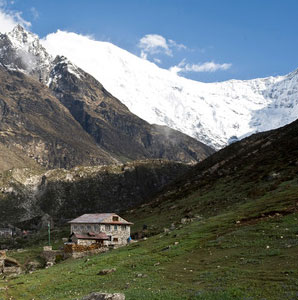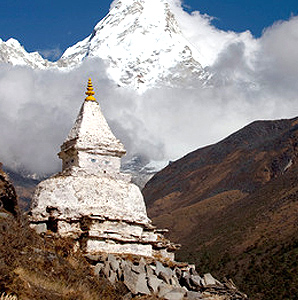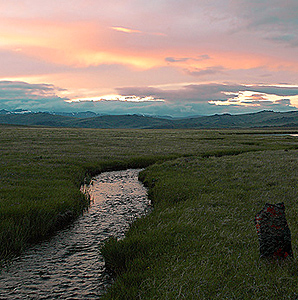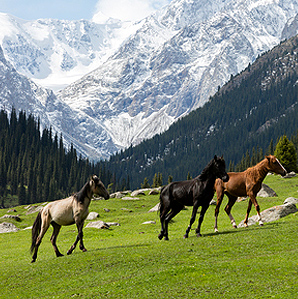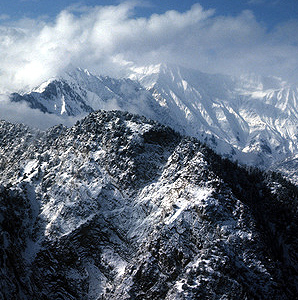In the Kanchenjunga region, one climate adaptation strategy has been the introduction of greenhouses in high altitude areas to diversify crops and improve food security, in many cases in areas where it was formerly impossible to grow fresh vegetables due to the cold mountain climate. In addition, the introduction of water efficient sprinkler irrigation systems has been highly successful. Using these sprinkler systems, many farmers in the Kanchenjunga have managed to double their cardamom production, greatly boosting their incomes. This increase in household incomes will ultimately permit these children to pursue career options beyond subsistence agriculture and herding in their mountain homes.
.JPG)
Additional Highlights
Preparation of a climate-smart snow leopard landscape management plan for Nepal's Eastern Himalaya GSLEP Priority Landscape.
Preparation of an integrated watershed management plan for the Tamor River Basin in the Kanchenjunga Region.
Repair of trails and bridges and introduction of clean piped water systems have increased use of formerly disused pastures, resulting in increased rates of pasture rotation in high mountain areas which will contribute towards increasing the resilience of mountain pastures to climate change impacts.
Introduction of improved metal cook stoves is reducing wood consumption in the Kanchenjunga Region, which will contribute to improving forest health and increasing the resilience of local forest to climate change impacts.
Training of local residents to be citizen scientists assisting in WWF snow leopard research efforts also has the added benefit of establishing a core group of local wildlife experts that will one day be able to diversify their incomes by serving as wildlife guides and naturalists for trekking groups visiting the Kanchenjunga Conservation Area.
Preparation of an integrated watershed management plan for the Tamor River Basin in the Kanchenjunga Region.
Repair of trails and bridges and introduction of clean piped water systems have increased use of formerly disused pastures, resulting in increased rates of pasture rotation in high mountain areas which will contribute towards increasing the resilience of mountain pastures to climate change impacts.
Introduction of improved metal cook stoves is reducing wood consumption in the Kanchenjunga Region, which will contribute to improving forest health and increasing the resilience of local forest to climate change impacts.
Training of local residents to be citizen scientists assisting in WWF snow leopard research efforts also has the added benefit of establishing a core group of local wildlife experts that will one day be able to diversify their incomes by serving as wildlife guides and naturalists for trekking groups visiting the Kanchenjunga Conservation Area.
A lasting impact
AHM Project-funded future climate scenario modelling for the eastern Himalayas of Nepal, including prediction of future of snow leopard climate refugia, has informed development of Nepal's Eastern Himalaya snow leopard landscape management plan. This plan will now serve as a model for replication in preparation of companion landscape management plans for Nepal's Western and Central Himalaya GSLEP Priority Landscapes. In addition, the landscape management planning process developed for the Eastern Himalaya GSLEP Priority Landscape will also serve as a model for climate-smart snow leopard landscape management planning by the other 11 GSLEP member states. On the ground in the Kanchenjunga Region, much of the increase in household incomes resulting from AHM Project cardamom irrigation and greenhouse activities will likely go to paying for higher education for the children of these farmers, which will ultimately permit these children to pursue career options beyond subsistence agriculture and herding in their mountain homes.
Discover the Landscapes
This website is made possible by the generous support of the American people through the United States Agency for International Development (USAID). The contents are the responsibility of WWF and do not necessarily reflect the views of USAID or the United States Government.
